If you have an EDM900 then your fuel flow should be very accurate, within 0.1 gal per hour, and I understand your primary concern is the amount in the tanks at start-up.
In that case, I suggest two things:
1) Get one of these
This is a universal gauge so you need to calibrate it for your aircraft, which is actually a good thing. As you can see it comes with a graph that you use to calibrate your fuel level “on the gauge” on a continuous basis from empty to full. Or you can create your own. Calibration takes some time but you only need to do it once. You just empty the tanks then add fuel a bit at a time, usually 5gal, and plot the gauge position axis against fuel gal axis on the graph. At the end you then just connect the dots, giving a line from 0 to max fuel. It allows interpolation to the nearest gallon and is pretty accurate and reproducible across the entire range. I have the graph laminated and keep it in the pocket behind my seat along with the gauge. I always dip the tanks, read the level off the card, and cross-reference to what my totalizer says I should have (usually left over from previous flight). That way you always start with a warm fuzzy about how much fuel is in the tanks and the totalizer will keep much more accurate track of usage than the OEM gauges.
I believe the Arrow has a left/right/off fuel selector, in which case you should do this on one tank and then repeat on the other tank. If you find the result on the graph varies between tanks then you might need to draw two lines, one for each tank. But I doubt that is necessary.
2) Make a number of flights where you start with full tanks and top up completely afterward (trying to fly down the fuel to close to minimums, at least down to about 1.5hr remaining). That way you know for sure exactly how much fuel is in the tanks at start and finish. Try to ensure when filling that full is really the same “full” in both cases. Compare the amount of fuel tanked with the totalizer computation of fuel used. If after several such flights you find that your totalizer is off by more than 0.1gal per full tank, then you need to adjust the K-Factor of the transducer measuring the fuel flow. There are instructions on how to set and modify this in the JPI documentation online.
Once you’ve done the above, and made a few trips where you run down the fuel to about 2hr remaining and cross-check fuel added against what the totalizer says, you’ll feel confident about what REM the totalizer is telling you and you’ll be able manage it better. Be as accurate as you can when adding fuel and adjusting the totalizer level accordingly. Reading the “dip stick” gauge will only be accurate to about +/- 1 gal so multiple refills without topping up need to use the fuel pump values for adjusting the totalizer. In those cases, the “dip stick” is more to give a (pretty good) rough confirmation and reality check. Nonetheless, it is a good idea to top up occasionally and set the totalizer to “full” just to “synchronize” and remove any slight discrepancy that has crept in through multiple partial tank fuel additions.
I just read this thread diverted into “accuracy of flight planning” and “usefulness and practicality of fuel totalizers for long range flying”
In today’s AVGAS-scarce world, it is not just about flying as far as your airplane will do in a safe way…
Oftentimes your destination or even your base do not have the required fuel available and it is about multiple “not so impressively long” legs knowing exactly how much fuel you have on board for your next leg or legs and planning your next fuelling.
Even with fuel available, sometimes you have a high hook-up fee you want to avoid so why always refuel after a flight when you are usually doing 1-2 hrs flights anyway. There is nothing wrong with that, and a fuel totalizer may be very useful to that effect.
Some of us also like to fully use the capability of the airplane not only in terms of % of max range in a single leg, or even in multiple unrefuelled legs or consecutive missions, but also in terms of % of useful load or even payload (ie useful load minus fuel) . Example here
Accurate management of your fuel supply is also very helpful in all of those cases, so no need to disregard the valuable knowledge in this “thread diversion” even if you are not frequently flying 80% of your airplane’s max range: nothing wrong with that.
Last week the Fox Oscar was passed into the trusted hands of Greg for its 50h check.
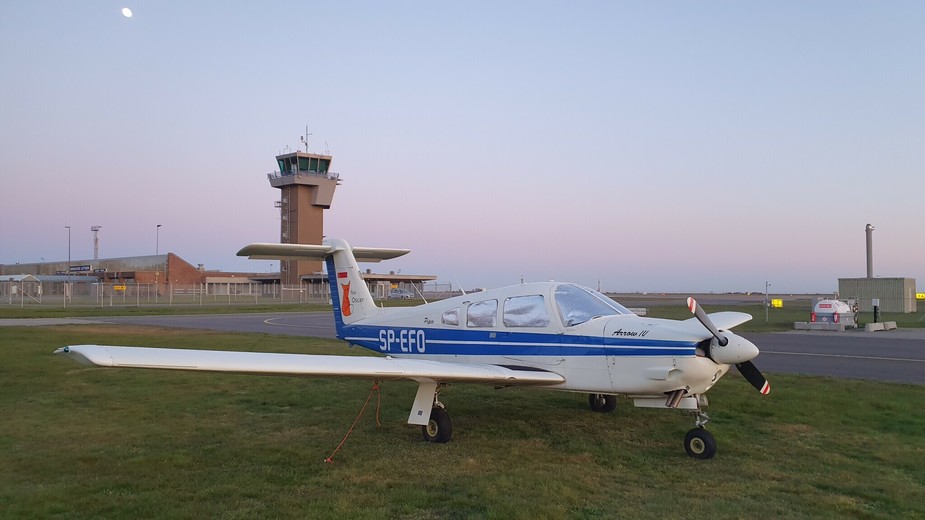
Parking at EKRN Rønne
These have been possibly the most pleasant 50h of my “flying career” so far. We’ve done three “bigger” trips, one to Bornholm, one to Corsica and one to mainland France. Here is a video clip capturing the mood of flying during the two of them. Important disclaimer: it is just lyric impressions, there is completely no technical content like routes flown, ATCs talked to etc! – don’t waste your time watching if you are only keen on the latter.
And here is a write up of the latest southeastern France trip: “LFLY Lyon-Bron for some caving!”
Now regarding the aircraft. Executive summary: It’s cool! It’s indeed dead easy to handle. The T-tail is a non-issue. Burns 10.2 gallons flying 130 KTAS at 6000’. The bad: useful load! Yes, we are a bit crazy – on the Bornholm trip we took our dog and some 54 kg of stuff along – four person tent included. I had to do my fuel planning homework very diligently – in the end, I was happy with it, as the reserve fuel sufficed to fly an unplanned leg to Sweden for refuelling, still with a minimal reserve (… it all happened as I did NOT do my airports planning homework diligently enough – and EKRN now only accepts Shell cards). Anyway, if a Jinn landed at our home airfield and announced he is in a mood for granting one wish – I would have immediately asked for an extra 30 kg of useful load. In the meantime, as the Jinn has not made his appearance yet, I have produced a lightweight towbar out of aluminium piping. See Post #36. In the hangar we use heavy duty steel, but I am taking only the “travel” towbar on the trips. It is perhaps not beautiful, but weighs some 1 kg less than the steel. For the mooring kit I also bought some niche aluminium screw-in pegs.
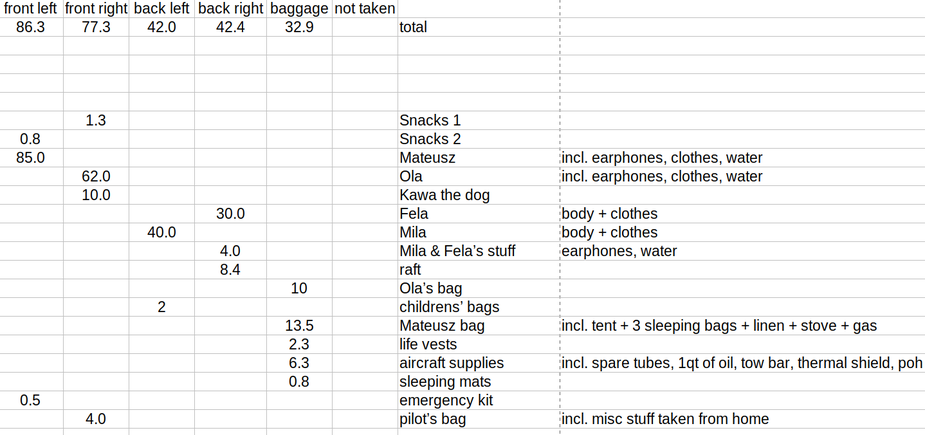
Bornholm freight manifest
Squawks and issues: The most serious problem we had was overheating of avionics. During the Corsica trip, at some point all the three Garmin G5 units indicated too hot (!). At first I blamed it on the scorching sun, the black material under the windscreen and insufficient insulation beneath. I have already been researching suitable non-flammable insulation materials and other ways to avoid the complexity of an extra ventilation fan… when, out of a sudden, the Wife fixed it in one minute. There is a label in cabin below one lever that says “CABIN AIR”. So it looks indeed like a very tempting lever to operate in the summer heat. Alas, it is in fact the windscreen defroster control (sic!). It turned out we flew all the way to Corsica and back in scorching sun with hot air being pumped to the base of windscreen. Of course the plane being 43 years old – and the defroster not being an entirely critical system – the hot air ducts are leaky. So we ended up inadverently heating everything between the firewall and the dashboard, including sensitive electronics and lithium ion battery cells. A bit scary, come to think about it now. But I am happy it can solved by replacing a cabin sticker and perhaps applying a few patches to the leaky ducts.
Other than that:
- My safety belt angle needed adjusting. The belt was jamming against the slit and it caused the inertia reel to lock, or sometimes to the contrary, not take in the belt. Actually a safety issue, not only in case of a crash, but also in that I sometimes had trouble reaching the fuel selector valve. It took 5 minutes to fix, but needed two people, as adjusting this required me holding the screw head outside, as Greg the engineer was fiddling with the reel in the cabin.
- The MD93 clock/USB charger does not work. The cause is very simple: the connecting plug needs to be replaced, as the ground wire pin is loose and while it can be forced into the device, it pops out right after the engine is started. I don’t care about the clock – not only I have one on my nav tablet, but I also have configured the GTN650 so that it shows current time while in the map view mode. But the USB charger would be nice! We’ll probably take care of it during the annual check in autumn.
- Mrs reports the vibration attacking her feet from the floor is a bit unnerving. I think it is well within what we pilots are used to, but I still want to make her more comfortable. Perhaps someone can recommend a smart foam material that I could simply put under the floor mat?
- I have a “Ground clearance” switch that turns on the GTN650 even when the Master switch is off. It works as it should. However the NAV/COM unit screen visibly flickers in that mode. Possibly nothing to be worried about … but has anyone had a similar issue?
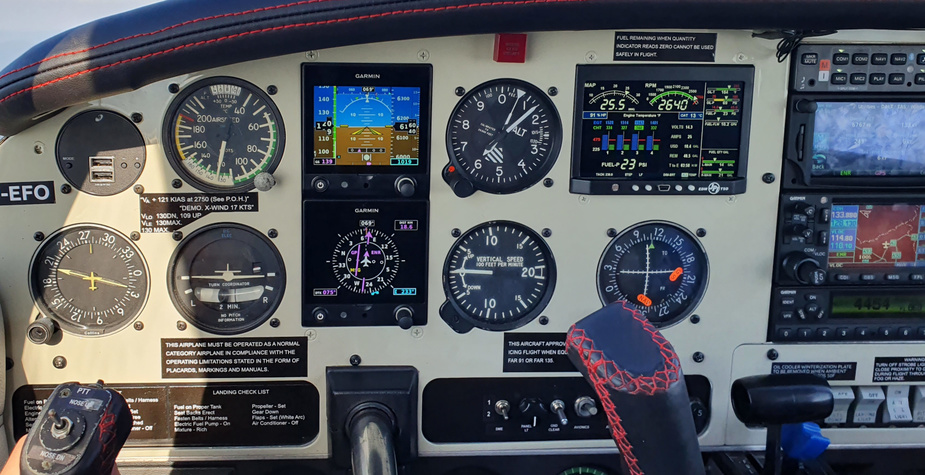
Summer cruise: 6000’, 130 KTAS, 10.2 GPH
The G5 data logging feature is great. Combined with flysto.net (most recommended!) it produces not only nice looking graphs, but also valuable data on real life takeoff performance. Our home airport is now a bit “fun” due to runway resurfacing. The runway is effectively 700 m plus a pile of debris over the next 300 m on the section being reworked now – and then it’s pretty high trees! In other circumstances, I would be more nervous taking off at MTOM in summer with the whole family onboard. But having a database of prior takeoffs and knowing how they compare to POH performance figures helped me stay confident it is (relatively!) safe. I only wonder how long the delicate MicroSD socket lasts…
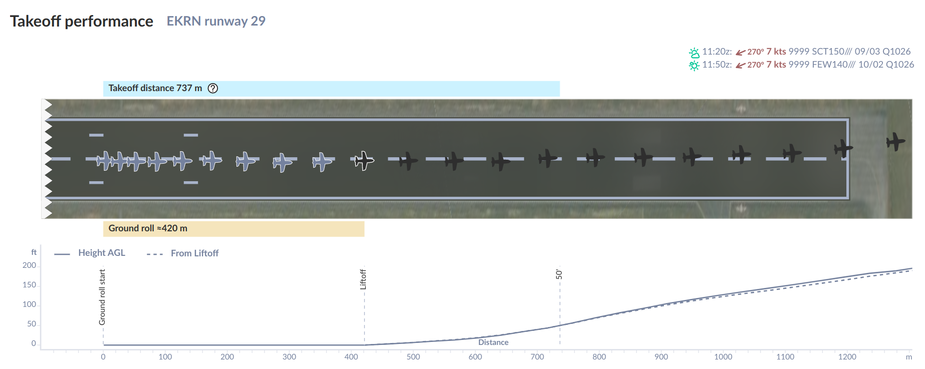
Do I miss an autopilot? Maybe a bit. All is well when it’s well, and when no one responds on the frequency you have been given and you need to quickly look up the other one … It was a bit better in the Bonanza, since my wife was more comfortable driving it straight and level for a few minutes. Now she says the dash is slightly too high for her height and to fly the Piper she needs to sit in an uncomfortable position. Anyway, having an autopilot is definitely not worth 30 000 Aviation Monetary Units for me, give or take VAT. Maybe if I could put in a serviceable, second hand analog autopilot for 10% of that… The servos are rumoured to be in place, it’s just the failed “CPU” that was removed a few years ago by the previous owners!
The GTN650 navigator is truly nice enough. Ola learned quickly how to operate the flight plan screen. Every time we flew further I prepared a “handbook” with routes and frequencies – and she entered all the nav data when the engine was warming up. I have bought a Jeppesen subscription so that I can confidently fly without paper maps (an onboard GNS430 unit and my nav tablet being my backups). Every computer in our home runs only Linux, and thus before every longer trip I need to start up a Windows virtual machine to run the Jeppesen database downloader. It took me a while to figure out a way to properly “pass through” the memory card into the virtual machine environment, so that the Jeppesen software recognizes it as a “removable” device. But well, I have seen worse. Pity they don’t support Android – I am also not an Apple person… But maybe one day I give in…

Typical Nav/Comm handbook for my crew
I stopped looking at the steam gauge ASI, but at the same time I noticed my brain prefers referring to the old style altimeter instead of the G5’s “tape”. I don’t think there is a case for fighting either of these involuntarly developed habits. But I do scorn myself for being overly fascinated by lots of numbers screaming at me in the cabin: GPH, EGT, CHT, RPMs, AMPs, EET, TTE … I must consciously remind myself to keep my head out of the cockpit.
I have digitized the POH graphs and contributed an NA Arrow IV data file to PA-28 POH Performance smartphone app. I rushed it and did quite a lot of errors in the process. Fortunately the guy developing this app is very serious about his data accuracy. He did a lot of double checks (possibly even spending more time on it than I did…) and pointed out what needs to be re-done. It’s a nice tool for W&B and takeoff performance calculations.
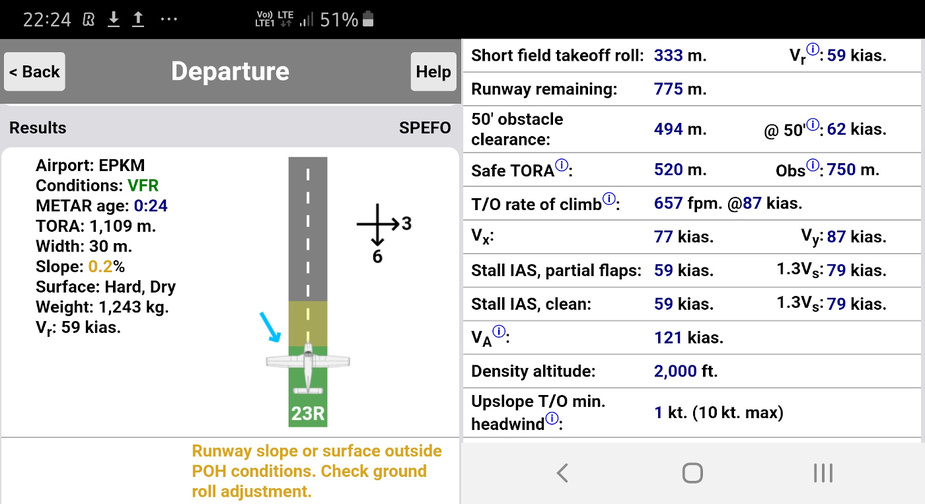
The POH Performance app – takeoff screen
The audio panel, GMA350c, is maybe even a bit too fancy. It mutes the children when someone talks on the radio. It took us a while before me and Ola figured out it is a feature and not a bug. Overall, it is annoying, as most of the talk on FIS/ATC frequencies is irrelevant to us (… and some pilots tend to use FIS to tell almost the whole story of their life, in parts). What I would need instead is a “MUTE CHILDREN” button that I could quickly press when in a middle of a conversation on the subject of, say, “are we there yet?”, I suddenly hear our call sign. I have merely skipped over the manual and haven’t properly researched this so far… but at least there is a voice command “Disable passenger mute” that apparently turns off this fancy. I am not a voice command person either, so I am yet to find a button combination that possibly does the same…
I have completely forgotten about the “PLAY” button. It seems a useful feature, even more useful than the Bluetooth connectivity (as our headsets have Bluetooth as well). Maybe I get used to it sometime and thus limit my “SAY AGAINS”.
I have not seen the cylinders exceeding a CHT of 370 F, although I could have not payed enough attention on takeoffs (… that could even be when I keep my head TOO much out of the cockpit). During these ~50 hours I added some 3 qt of oil, but in the meantime we also changed the oil once. Overall, the oil consumption is now estimated to be at ~0.1 qt/h. Greg the engineer says in hot summer we must surely have been losing more than the average will be.
Among work and other commitments, I had no perception left to order/make a proper cover. So just before the first trip I have cut makeshift window shades out of aluminum-foil-covered insulation foam. The edges of the shades are wedged in a gap between the acrylic windows and cabin plastic lining. It is going to be my permanent solution, as now I don’t see a case for owning a cover! The foam shades take maybe 10 minutes to install and less than 2 minutes to remove. They weight next to nothing and they have kept the cabin pretty cool even when parking in southern France during an Official Heatwave. And with my current arrangements and flying profile, the plane is not likely to spend more than a month outdoors every year.

The makeshift reflective shades
Having a hangar secured is of course great, but… Someone slightly bent the right flap skin moving the Fox Oscar around the hangar. I take care to park it in the far corner, but sometimes it still has to be moved when I am not there, to get out the gliders sitting in the hangar’s back. The damage is this time only to the aesthetics… But I thought why not do something about it… So in addition to the “NO PUSH” labels prescribed by AMM, I added a few suggestive “PUSH HERE” stickers.
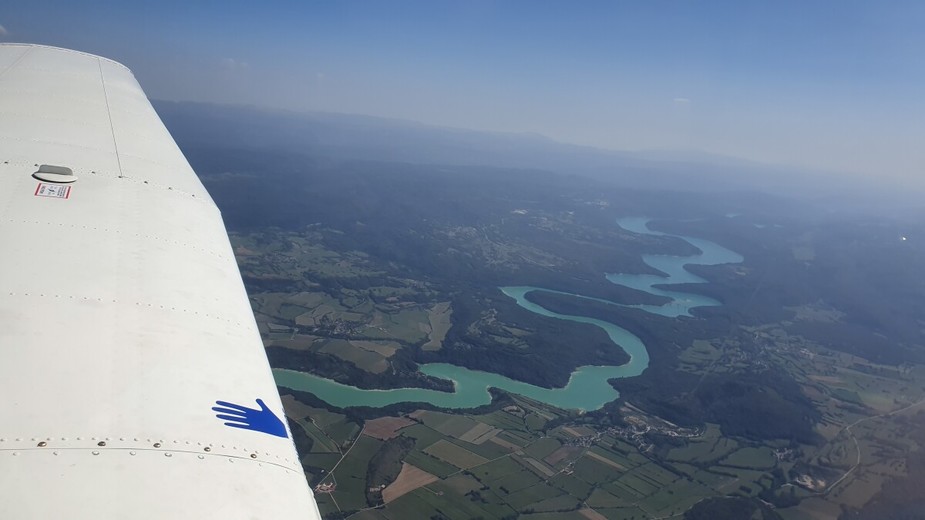
Finally, totalizer accuracy: Since it’s really what this thread is about, isn’t it? :) I developed a habit of taking photo of the EDM900 just before/after the engine shutdown. Like I anticipated (see previous posts), I rarely flew anywhere with tanks full. Since my last report on totalizer accuracy (Post #51), the tanks were topped up full on merely two occasions (!). In the first cycle the totalizer under-read by 2.6 USG over 52.3 USG burned. The other period between “tanks full” was much longer and I burned overall 232.8 USG. Upon topping the tanks, the totalizer was off by 12.7 USG and the gauges by 4 USG. Both erred on the safe side. Anyway, these numbers imply a ~5% totalizer error. That’s it folks, at least for the time being!
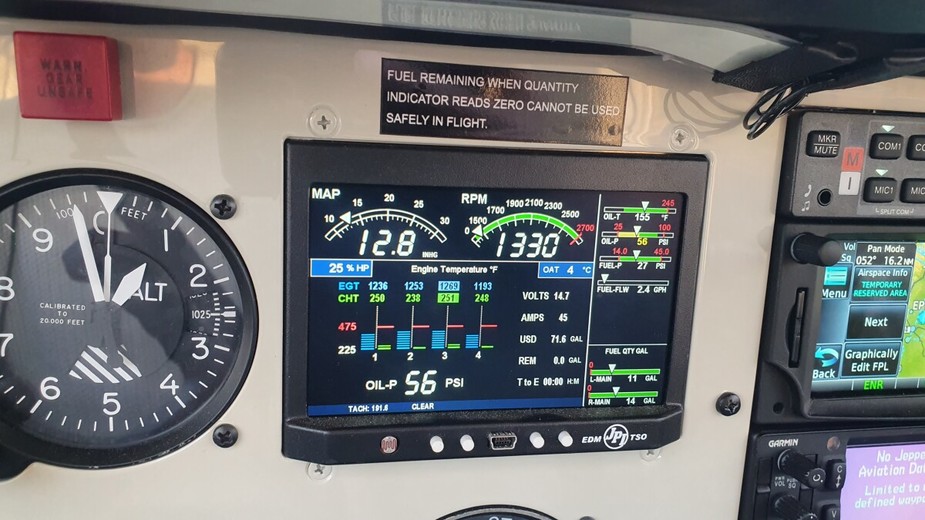
My phone storage is full of these photos!
Welcome to the Arrow IV fraternity!
I have had/flown my Arrow IV for over 15 years and flown many hundreds of hours in Europe.
As you say, I find the T-tail a non-issue – in fact it produces a very calm cruise setting.
The pay-load is greater than a Cirrus!
Has anyone shown you how easy it is to take out either or both of the back seats? I frequently only fly with 3 seats – the extra space is wonderful for suitcases etc.
Two ‘improvements’ I have done: I fitted GAMIjectors. With an Engine Monitor – which you have – they have paid for themselves in fuel saving many times over.
The other ‘improvement’, which I can’t be certain does what it says on the tin, was to fit a ‘Black Magic’ Waste Gate.
If I can be of help, do sent me a PM.
Meanwhile, Happy flying!
Just a very casual observation. The PET (Piper Electric Trim) system is permanently energised when the master is on. That trim switch on the yoke looks like a regular off-the-shelf switch, and not an OEM one. The OEM one would be a four-contact switch, which has much less likelihood of ever sticking on you and causing a trim run away. You can disregard the hint here, but it’s worth bearing in mind and very easy to investigate.
Peter_G wrote:
Welcome to the Arrow IV fraternity!
Hi @Peter_G. WOuld you have a look at my post here on Mateusz’s aircraft and add some colour?
That line of thought probably belongs more on this thread than therein but reading on you will see some more shades of grey from @Mateusz there. Feel free to answer on this one.
Peter_G wrote:
Has anyone shown you how easy it is to take out either or both of the back seats?
Thank you for your warm words, Peter_G. Yes, a while ago I’ve read that you can remove them without using any tools and figured it out myself. It’s brilliant! This time it made sense to use the seats as a separator between two “luggage compartments”. But I may have use cases for removing them.
The other ‘improvement’, which I can’t be certain does what it says on the tin, was to fit a ‘Black Magic’ Waste Gate.
So yours is Turbo, isn’t it? Just for the record, mine is a normally aspirated example.
WilliamF wrote:
That trim switch on the yoke looks like a regular off-the-shelf switch, and not an OEM one.
That is a very valuable comment! Would never have learned about it. Thank you. I think it is probably not too critical (the electric trim is easily disabled by popping out a circuit breaker). But I am adding it to my ‘pending’ list of issues to be addressed sooner or later.
Mateusz wrote:
the electric trim is easily disabled by popping out a circuit breaker)
There should also be a trim disconnect pushbutton switch under the yoke or thereabouts on the panel…is there not? Make sure you test it and it does work. You only have seconds to activate it in case of a runaway before things go out of hand.
Mateusz wrote:
I think it is probably not too critical (the electric trim is easily disabled by popping out a circuit breaker).
That is what the Boeing Max folks thought as well. Nope, it is very critical indeed. If your trim goes all the way down or up while you are low altitude, it’s one of the worst things which can happen. Forget about finding the CB, you never will if you are pulling with both hands you can also not reach it. If anything, use the cutout switch under the yoke.
Antonio wrote:
There should also be a trim disconnect pushbutton switch under the yoke or thereabouts on the panel…is there not?
On this pic, I think I can just about spot it.
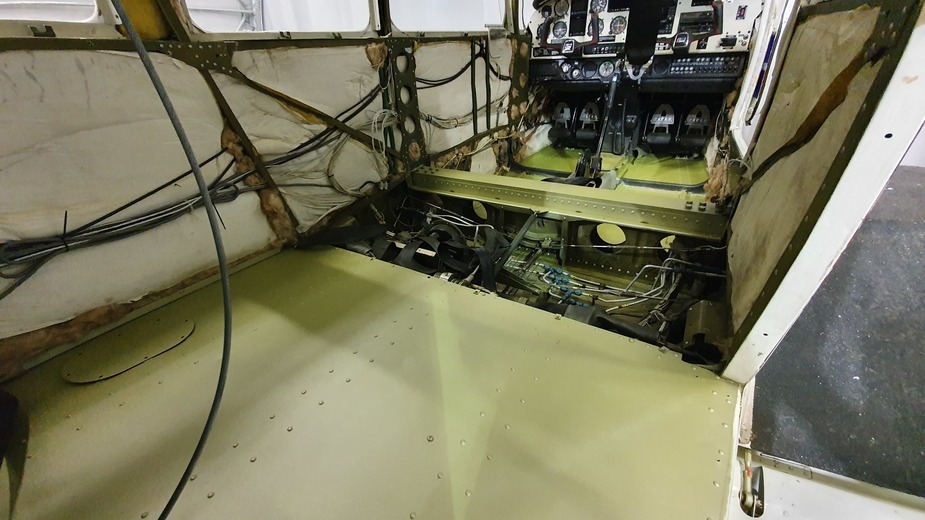
Antonio wrote:
There should also be a trim disconnect pushbutton switch under the yoke or thereabouts on the panel…is there not? Make sure you test it and it does work. You only have seconds to activate it in case of a runaway before things go out of hand.
Not being pedantic, it’s just such a hugely important safety item. The red disconnect button on a Piper Autopilot disconnects the autopilot, not the trim PET system itself which is constantly energised. The old Piper Autopilots had a yellow annunciator light that lit up when the trim servo ran continuously in any altitude mode. The disconnect button on the yoke only disconnects the autopilot.
In a Piper Electric Trim run away you must either turn off the master or pull the Circuit Breaker.
The information on them is hard to wade through, but in effect, you could end up with 3 systems on board you need to read up on -
1) Piper Electric Trim (PET)
2) Piper AutoFlite (Single button Wing leveller – marketed for emergency/partial panel situations)
3) Piper Autopilot